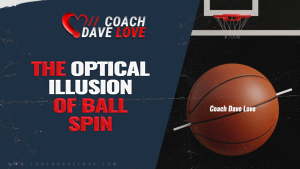The Challenge Point Principle is a cornerstone of effective skill acquisition, helping coaches design practices that accelerate learning and transfer to game situations. Originally developed by Dr. Mark Guadagnoli and Dr. Timothy Lee, the principle proposes that the optimal level of difficulty for learning lies between too much and too little challenge. When it comes to basketball shooting, understanding and applying this principle can lead to more efficient development, increased retention of skills, and better adaptability under game-like pressure.
Nominal vs. Functional Task Difficulty
A key concept within the Challenge Point Principle is the distinction between nominal and functional task difficulty. Nominal difficulty refers to the inherent complexity of the task itself—factors such as distance from the hoop, type of shot (e.g., three-pointer vs. layup), or even the shooter’s starting position. These aspects remain constant, regardless of the individual performing the skill. Functional difficulty, on the other hand, changes based on the shooter’s skill level and experience. For instance, a shot from the elbow may be relatively easy for a high-level shooter but extremely challenging for a beginner.
This distinction matters because it allows coaches to structure practices that match a player’s developmental stage. If nominal difficulty is too high (e.g., asking a young shooter to take contested three-pointers), it may overwhelm the player and hinder skill acquisition. Conversely, if functional difficulty is too low (e.g., asking an elite player to repeatedly shoot unguarded mid-range shots), it fails to stimulate adaptation and growth. Therefore, finding the right balance between nominal and functional difficulty is crucial for maximizing each player’s learning potential.
Adding Variability to Practice
One effective way to implement the Challenge Point Principle is through variability. In basketball shooting, this might include changing shooting distances, altering shot angles, incorporating live defenders, or varying the speed and type of movement before a shot. Variability makes practice more dynamic and unpredictable, closely simulating the conditions players face during games. The goal is to encourage players to adapt and make decisions in real time, rather than merely replicating a single movement pattern over and over again. This type of practice can improve a shooter’s ability to handle pressure, adjust to different defenders, and still execute high-quality shots.
But adding variability needs to be carefully managed. If the challenge becomes too great—such as introducing a defender too early—the shooter may fail to explore around a new movement pattern or solution, reducing the effectiveness of the practice. Coaches should strive to introduce variability incrementally, increasing it as the player’s skill level improves. For example, start with catch-and-shoot drills at varying spots on the floor, then add movement, and finally introduce a close-out defender. This progression helps to gradually elevate both the nominal and functional difficulty, aligning with the player’s capacity to handle more complex scenarios.
Different Levels of Challenge for Different Players
The Challenge Point Principle also highlights the importance of individualized coaching. Each player has a different threshold for what constitutes an optimal challenge, based on their current abilities and confidence level. What may be a perfect practice environment for one player might be too easy or too difficult for another. This requires coaches to be observant and willing to adapt on the fly.
For example, a developmental player working on their shooting form might benefit from focused drills with fewer variables, such as stationary Movement Coordination drills. Meanwhile, an advanced player could be better served by drills that incorporate decision-making under pressure, such as shooting off the dribble, within a small-sided game. against varying levels of defensive closeouts. The optimal challenge point for each player will not only change as they improve but will also vary day-to-day based on factors like fatigue, focus, and confidence. This is why Periodization of Shooting Development and a willingness to modify drills are key aspects of the Challenge Point Principle in action.
Practical Implementation for Coaches
To put the Challenge Point Principle into practice in a shooting development context, consider the following strategies:
Assess the Player’s Baseline: Before implementing variability or increasing task difficulty, understand where the player currently stands in terms of mechanics, consistency, and mental readiness.
Adjust Nominal Difficulty: Start by modifying fixed variables like shot distance, shot type, or the presence of a defender. Keep these changes small and manageable, especially for less proficient shooter.
Modulate Functional Difficulty: Once players demonstrate increased proficiency, focus on enhancing functional difficulty by incorporating more cognitive and physical challenges, such as decision-making, contested shots, or increased speed and physicality.
Use Progressions to Build Complexity: Design a series of progressions that gradually increase both nominal and functional difficulty. For instance, start with form shooting, progress to catch-and-shoot under time pressure, and eventually add constraints like a closing defender or the need to make a read before shooting.
Monitor and Adapt: Continuously evaluate whether the current level of difficulty is helping the player engage and improve. Be willing to dial back or increase the challenge based on their response. If the player is missing the majority of their shots, consider reducing the difficulty temporarily. Conversely, if they are making every shot comfortably, add an extra layer of challenge.
Key Takeaways
The Challenge Point Principle is about intelligent practice design. It encourages coaches to think critically about how they structure shooting drills to promote not just performance, but long-term learning and adaptability. By differentiating between nominal and functional difficulty, incorporating variability, and tailoring the challenge to individual players, coaches can create an environment where players are continuously engaged and developing. The ultimate goal is to help players become adaptable shooters who can consistently execute in a variety of game scenarios—not just under ideal practice conditions.
Applying the Challenge Point Principle in basketball shooting development requires time, attention, and a deep understanding of each player’s strengths and weaknesses, but the payoff is a more resilient, versatile shooter who is prepared for the complexity of real game situations.



